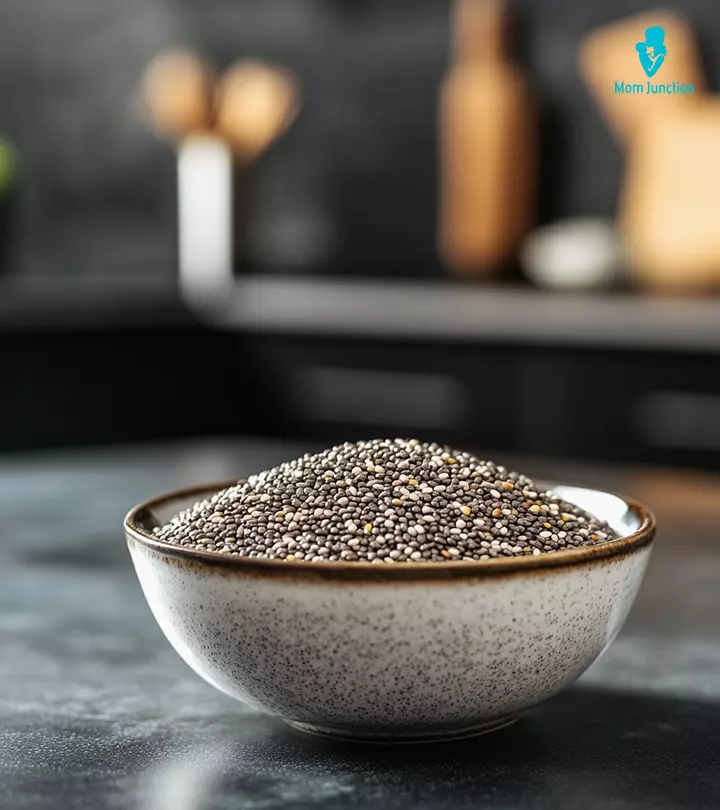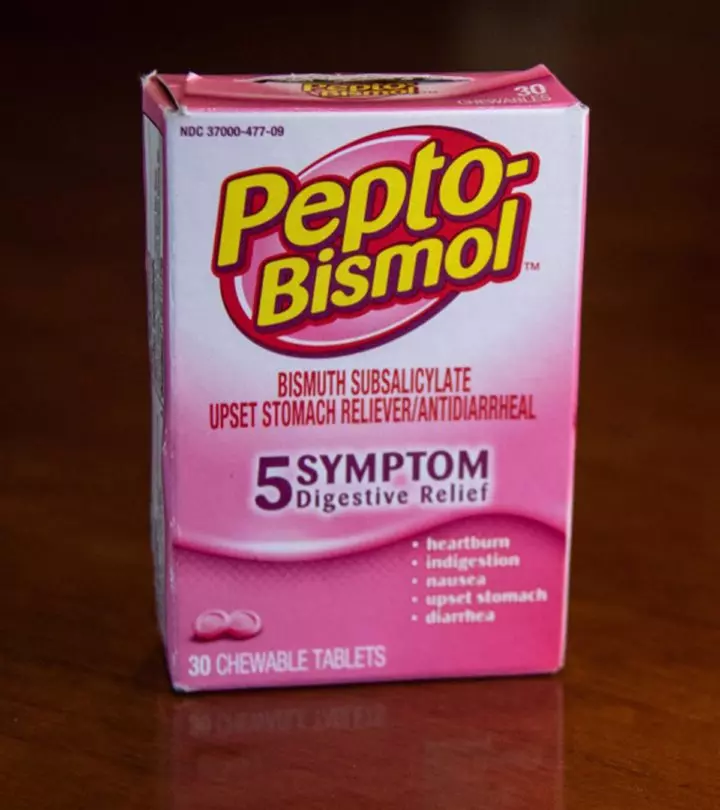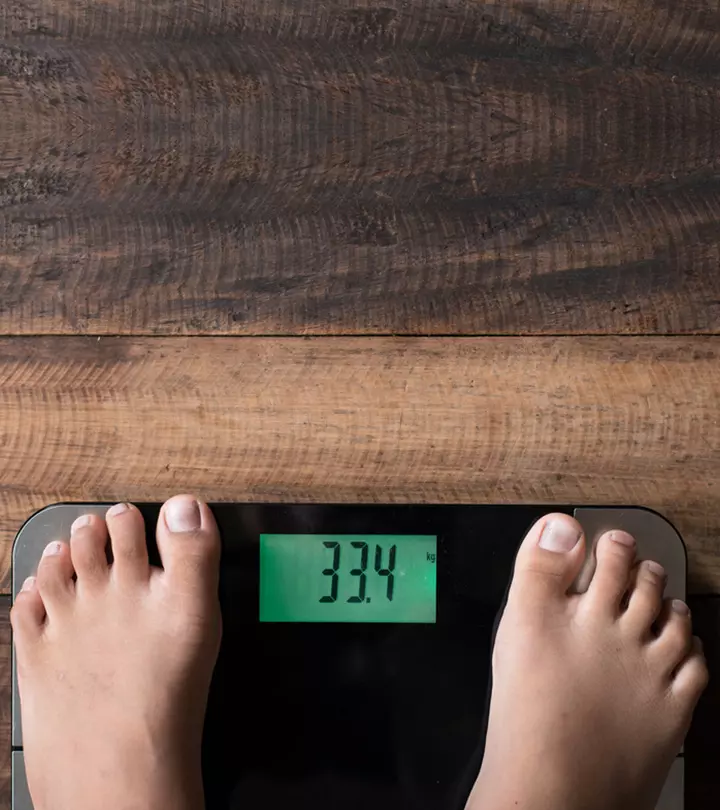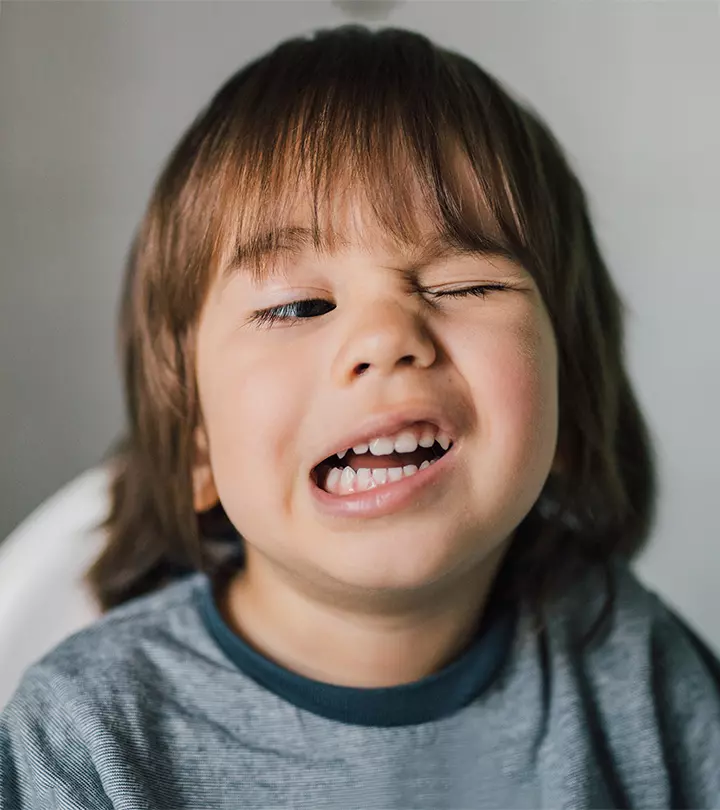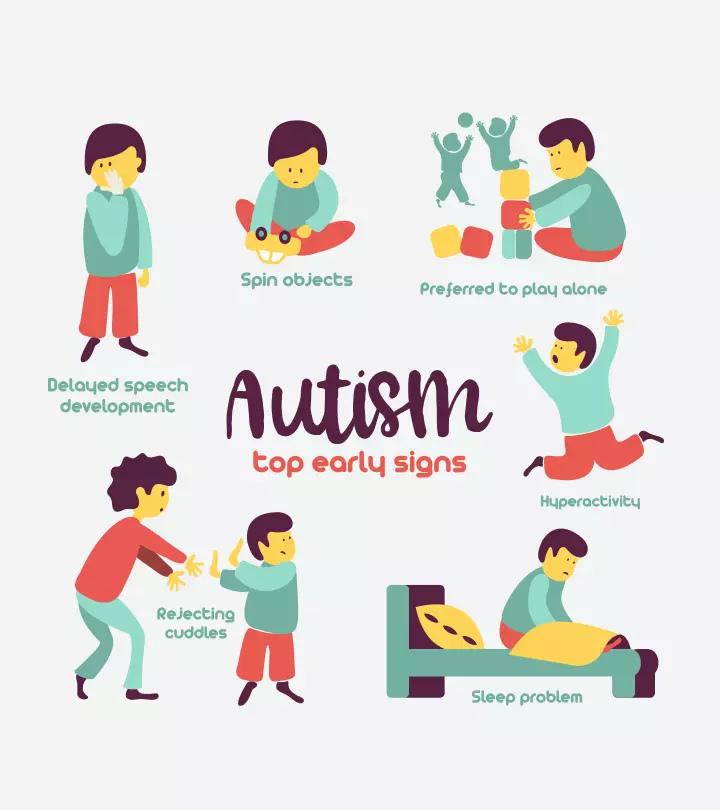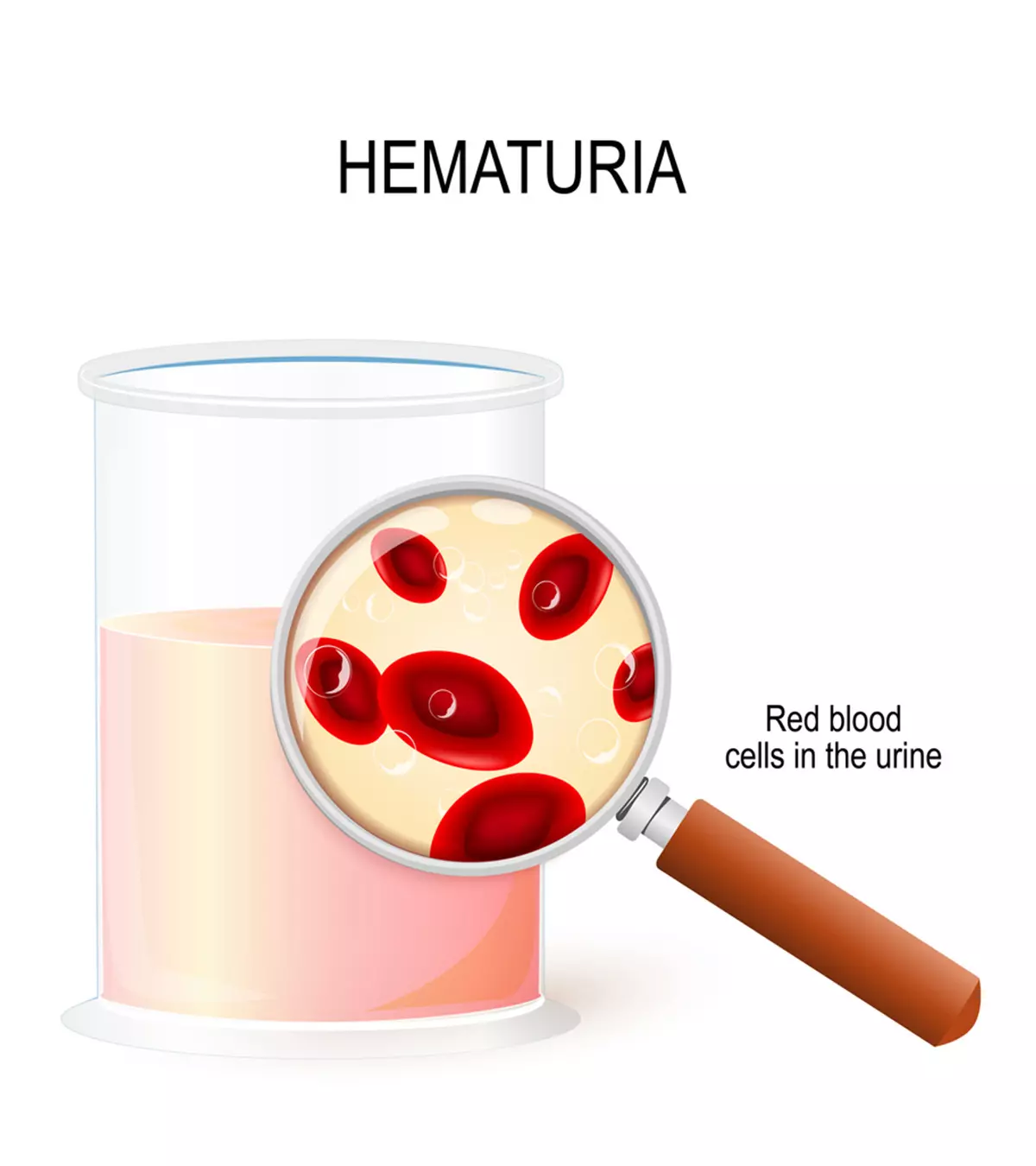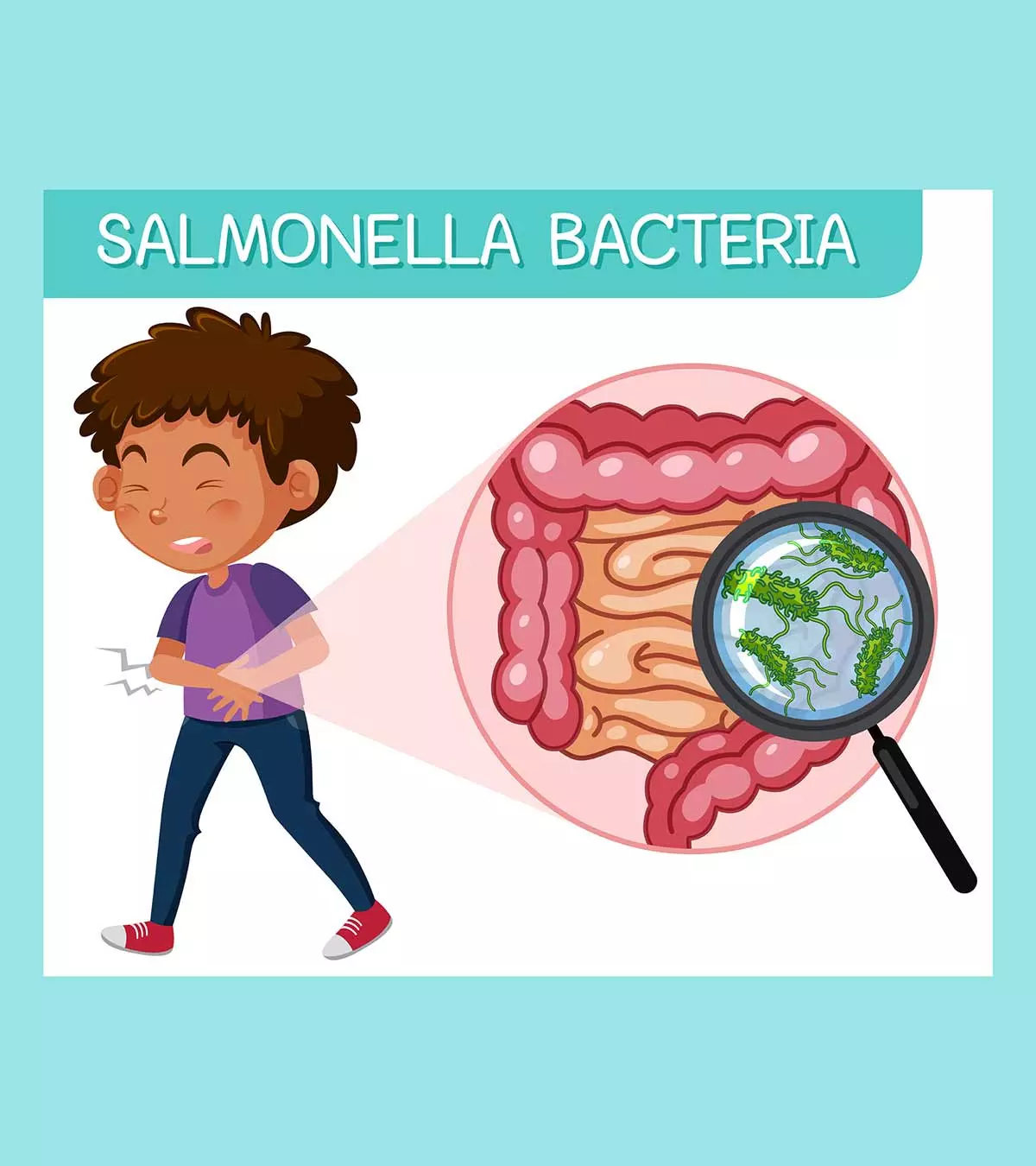
Image: Shutterstock
Flea bites on children appear as tiny and itchy red bumps or welts on the skin. These occur due to the bites of fleas, which thrive on blood (1). Fleas are often transmitted to humans from furry pets such as dogs or cats. The fleas jump on non-living objects, such as carpets or tables, and transfer to a new host from there. However, flea infestation may occur in houses without pets, too.

The bumps due to flea bites may be painful and itchy, causing significant discomfort to the child. But, constant itching may increase the risk of secondary infection. Timely diagnosis and treatment of flea bites in children are important to prevent secondary infection.
Read on to learn more about complications, treatment, and prevention of flea bites in children.
Key Pointers
- Flea bites can present themselves as small, red, and hard bumps on the skin and develop within 30 minutes of the bite.
- Constant scratching of the bite site may lead to a secondary bacterial or viral infection.
- Flea bites can also cause allergic reactions in children.
How Do Flea Bites Look?
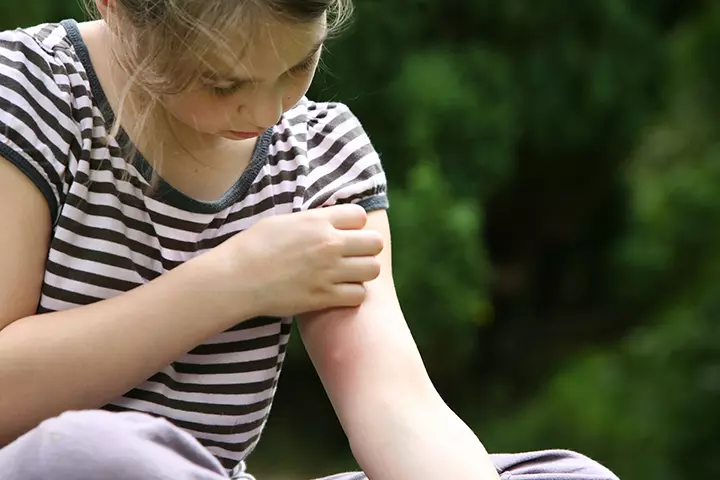
Medical expert Dr. Po-Chang Hsu says, “Flea bites are small, red bumps that typically have a halo around them. They usually appear in clusters or lines, especially on areas like the lower legs, ankles, and feet, since fleas tend to bite in areas closest to the ground. Flea bites are incredibly itchy and irritate quickly, especially if a child scratches them.”
The following are some common signs and symptoms of flea bites in children (2).
- Extreme itching (pruritus).
- Development of small, red, hard bumps or weltsiA raised bump or protrusion on the body within 30 minutes of the bite.
- Soreness, swelling, and pain at the site of the bite.
The intensity and severity of these symptoms may vary from one child to another. Additionally, children sensitive to flea bites may develop an allergic reaction, causing rash, hivesiRed, raised bumps or patches on the skin , or central blisters (or weal) that may break and become oozy and crusted (3).
Note: Flea bites commonly occur in the exposed body parts, such as the legs, feet, ankle, and waist, where there’s a gap between the shirt and trousers or skirt. However, they may also occur in the skin folds of the elbow and knees, armpits, and groin (4).
 Quick fact
Quick factPossible Complications Of Flea Bites In Children
One of the most common complications of flea bites is a secondary bacterial or viral infection due to constant scratching or rubbing of the affected site (2).
Also, when a flea bites, it can transmit pathogens, such as bacteria, to humans, causing diseases such as bubonic plague, rickettsia typhus, and cat scratch fever. However, this may occur in rare cases (4).
Besides these, flea bites can trigger a localized or general allergic reaction in sensitive children. The intensity of these reactions depends on the child’s sensitivity. Some of the common manifestations of an allergic reaction that a child may show are
- Extreme itching at the site of the bite.
- Rash or hives in and around the site of the bite.
- Skin irritation or dermatitisiSkin inflammation or irritation caused by infections, genetics, or reaction to an allergic substance .

Note:
AnaphylaxisiA severe allergic reaction causing breathing difficulties and loss of consciousness. due to flea bite allergy has not yet been reported (5).
Furthermore, if a child ingests an infected flea, they may develop intestinal tapeworms. However, the chances of this complication in humans are much less than it is in pets.
 Did you know?
Did you know?When To Seek Medical Attention For Flea Bites
Flea bites in children are generally harmless and can be managed with home care. However, certain symptoms may require medical attention (6). Here are some guidelines:
- Signs of infection: If the bite area becomes red, swollen, warm, or starts oozing pus, it may indicate an infection.
- Allergic reactions: Severe itching, hives, or swelling beyond the bite area could suggest an allergic reaction.
- Fever or flu-like symptoms: If your child develops a fever, chills, or body aches after flea bites, it’s important to seek medical attention.
- Unusual rash: Though rare with flea bites, a spreading rash or a bullseye-shaped pattern may indicate a more serious condition and warrants medical evaluation.
- Persistent symptoms: If itching or discomfort persists beyond a week or worsens despite home treatment, consulting a healthcare provider is recommended.
Treatment For Flea Bites In Children
The treatment for flea bites aims at relieving the symptoms and preventing the spread of secondary infectioniA secondary bacterial or viral illness following another infection . When treating flea bites on children, it’s important to dispense mild treatment suitable for their delicate skin. Here are some simple treatment measures you can take to relieve your child’s symptoms (2).
- Instruct your child to avoid scratching the affected site as much as possible, as scratching can worsen irritation and increase the risk of infection. To ensure the scratching doesn’t do much harm, keep your child’s nails trimmed.
- Keep the affected site clean by washing it with warm water and mild antiseptic soap. Maintaining cleanliness will help prevent secondary infection risk to some extent.
- Applying cold compresses or ice packs to the bite site helps reduce inflammation by constricting blood vessels, which alleviates swelling, soreness, and itching.
- Products like calamine lotion work by creating a cooling effect on the skin, providing temporary relief from itching. Similarly, pure aloe vera gel, rich in salicylic acid, is effective in soothing itching and discomfort (7).
- Chamomile tea, made from dried chamomile flowers rich in terpenoids and flavonoids, offers antioxidant and antihistamine benefits. To soothe flea bites, steep a chamomile tea bag in water for 20 minutes until golden-brown. Squeeze out excess water, press the tea bag on the bites for 10 minutes, and then wipe the area with a clean towel. Store the wet tea bag in the fridge for reuse throughout the day (7).
- Apply a thin layer of unprocessed honey to the affected area and cover it with a bandage to prevent messiness. Honey has soothing properties that can relieve itching and pain from flea bites (12).


 Quick fact
Quick fact- Check with your child’s doctor about any treatment that might be needed for potential tapeworm infestation, as fleas can transfer this parasite through their bite.
Note:
If you intend to use herbal home remedies, such as essential oils, to relieve itching and promote skin healing, consult an alternative medicine expert. An expert will help you with the right product dosage suitable for your child based on their age, general health condition, and state of the flea bite.
Despite prompt treatment, if your child’s symptoms do not improve and they complain of additional discomforts, such as increased pain, secondary infection, or fever, consult your pediatrician.
Prevention Of Flea Bites In Children
The best way to prevent flea bites is to minimize your child’s exposure to them. Here are some measures that you can observe (8).
1. Locate the flea source and kill them with anti-flea insecticides. Extermination is necessary as fleas reproduce rapidly, and curbing their growth becomes extremely difficult. You can find fleas in your doormats, carpets, or couch. Alternatively, they can be on your furry pets, such as cats and dogs, and in your yard, construction sites, and woody areas with tall grasses.
2. Clean the suspected indoor areas and items. As soon as you locate the area, prepare for its sanitization. For instance, you can vacuum clean rugs, couch liners, doormats, carpets, and all the other fabrics that you suspect are infested with fleas. It will help remove flea, flea eggs, and droppings. Alternatively, you can steam clean or shampoo the fabrics and use boric acid powder to prevent flea from reproducing (1).
Two Crazy Cat Ladies, a YouTube channel belonging to two cat-lovers from the US, mention in their vlog how the manifestation of fleas in their homes, or more specifically rugs, can be stopped. They explain, “In order to safely remove fleas from your home, you would want to stop the cycle. Flea eggs can go dormant in your carpet and hatch with the smallest vibration, which will start the cycle again, so you will need to treat your house even after you no longer see the fleas. Vacuum the carpets in your home daily and use safe natural flea treatments, both for your cats and in your home. Be consistent as it can take several weeks to break the cycle, but you can do it naturally with these tips (i).”
You could also vacuum all the crevices around baseboards, behind doors, and under furniture, cabinets, and appliances. Throw off the vacuum bag immediately once you finish cleaning.
3. Consider pest control indoors and outdoors. For instance, you can treat your home with insecticides using a hand sprayer, aerosol can, or room fogger. Alternatively, you can book a professional pest control service and let them clean the house and yard thoroughly. Here, you should note that the flea pupae don’t get affected by the insecticide (1). So, you may see some adult fleas in your house for up to two weeks after the treatment.
4. Talk to your child’s school or day-care facility if you suspect that the child may be getting flea bites there. While the organizations take the necessary measures to locate and combat fleas, go a little further and dress your child in weather-appropriate clothes that cover their exposed body parts, such as arms and legs.
You can clothe your child in full-arm shirts, socks, gloves, and trousers. Additionally, tuck in their shirt in their trousers and their trousers’ legs into their socks or shoes. Follow this practice even when you take your child to play outdoors.
5. Consult your healthcare provider regarding insect repellents. The doctor will suggest some non-toxic, child-friendly insect repellents that the child could wear on their skin or spray on their clothes. Fabric roll-ons are good options too. Teach your child to use insect repellents whenever they step out of the house.
6. Keep your pets flea-free. To know if your pet has fleas, observe them. For instance, if you notice your pet continually scratching themselves, especially when they spend a lot of time outdoors, there’s a high chance that they have fleas (1). Furthermore, if you notice salt and pepper-like mixture on your pet’s bedding or red scabs on their skin, they may have fleas. In such a scenario, consult a veterinary doctor and seek advice to treat your pet (9). The doctor may

- Administer anti-flea liquid applicants, pills, or flea collars for your pet.
- Use anti-flea shampoo to bathe your pet regularly.
 Quick tip
Quick tipYou could also opt for spot-on formulations to remove fleas. These products are safer and easier to use than sprays and pills (1). check with your veterinarian. Besides this, comb your pet’s hair regularly using special flea combs, wash their bedding at least once a week with warm water, and maintain hygiene at home to help prevent flea infestation.
Note: Buy anti-flea products that are labeled for a particular pet. It means if you buy a dog-oriented anti-flea product, use it only on dogs and not cats. Also, keep your child away from anti-flea products and pets that have just been treated. If they want to tend to the pet, ask them to wear gloves.
Myths Vs. Facts About Flea Bites On Children
Understanding the facts about flea bites is essential for effective prevention and treatment. Here are some common myths and the corresponding facts (7):
- Myth: Flea bites are harmless.
Fact: While mostly harmless, flea bites can cause allergic reactions and spread diseases like plague and typhus. They can also carry tapeworm larvae.
- Myth: Fleas only infest dirty homes.
Fact: Fleas can be brought into any home by pets, regardless of cleanliness.
- Myth: Fleas live on humans.
Fact: Fleas typically prefer animals and bite humans by chance. - Myth: Flea bites transmit diseases to children.
Fact: While it’s possible, it’s uncommon.
Frequently Asked Questions
1. How long do flea bites last on kids?
Like any other insect, flea bites are usually itchy for a few days. While the redness lasts about three days, the swelling may last around seven days (10).
2. Can fleas live in your bed?
No, fleas do not live on beddings or linens. But they might lay their eggs on them, which may eventually hatch. Therefore, it is essential to disinfect your beds from flea eggs as well.
3. Will fleas go away on their own?
No, fleas do not go away until and unless you disinfect the source. They have a long life cycle, so proper care must be taken to eliminate them completely (11).
4. Can fleas live on children?
Fleas may live on humans. There are different types of fleas which prefer different hosts. For example, the human flea likes humans and pigs as hosts, while cat fleas live on cats, dogs, and humans (12).
5. Why do fleas bite my child?
Fleas bite children and other humans or animals to survive and feed their offspring. Adult fleas feed on their host’s blood and their larvae feed on the dried blood found in the excrement of adult fleas (13).
Flea bites on children are often seen on the exposed areas such as hands, legs, face, etc. These skin rashes can be itchy, and scratching could result in secondary bacterial infections. Fleas can also transmit certain pathogens, causing diseases such as rickettsia and cat scratch fever. Some children may develop localized or generalized allergic reactions such as swelling on the bite sites or breathing troubles after flea bites. You may wash and apply creams to the bitten area to prevent itching. Indoor and outdoor pest control at home and using prescribed insect repellents before going outdoors may prevent flea bites on babies and children.
Infographic: Secondary Infections Caused By Flea Bites
In addition to the common complications of flea bites, there are certain secondary infections that fleas may spread through their bite. Many people may not be aware of these infections since they tend to be uncommon among humans. We have prepared this infographic that lists the not-so-common secondary infections associated with flea bites. Read on and save it for future reference as well.
Some thing wrong with infographic shortcode. please verify shortcode syntax
Personal Experience: Source
MomJunction articles include first-hand experiences to provide you with better insights through real-life narratives. Here are the sources of personal accounts referenced in this article.
i. How to get rid of the fleas in your home naturally.https://www.youtube.com/shorts/DZpe8ckTdQg
References
- Fleas.
https://www.canr.msu.edu/ipm/uploads/files/Fleas.pdf - Fleas.
https://www.betterhealth.vic.gov.au/health/conditionsandtreatments/fleas - Flea bite.
https://dermnetnz.org/topics/flea-bite/ - Flea Bites 101.
https://www.pestworld.org/news-hub/pest-articles/flea-bites-101/ - Flea Bites; American Osteopathic College of Dermatology (AOCD)
https://www.aocd.org/page/FleaBites - Children and Fleas, Mites, and Chiggers.
https://www.chop.edu/conditions-diseases/children-and-fleas-mites-and-chiggers - Flea Bites.
https://my.clevelandclinic.org/health/diseases/21718-flea-bites - Flea, Mite or Chigger Bites in Children.
https://www.stanfordchildrens.org/en/topic/default?id=flea-mite-or-chigger-bites-in-children-90-P01901 - How to Get Rid of Dog Fleas.
https://www.akc.org/expert-advice/health/how-to-get-rid-of-fleas/ - Insect Bite.
https://www.seattlechildrens.org/conditions/a-z/insect-bite/ - Getting Rid of Fleas.
https://www.cdc.gov/fleas/section-name/index.html - Fleas.
https://dph.illinois.gov/topics-services/environmental-health-protection/structural-pest-control/fleas.html - Fleas.
https://www.nyc.gov/site/doh/health/health-topics/fleas.page
Community Experiences
Join the conversation and become a part of our nurturing community! Share your stories, experiences, and insights to connect with fellow parents.
Read full bio of Dr. Arva M Bhavnagarwala

Dr. Po-Chang Hsu is a medical doctor and medical content expert. He received his medical degree from Tufts University School of Medicine in Boston in 2016. Previously, he did a master’s degree at Harvard University and wrote a thesis on neuroimaging in schizophrenia patients at Brigham and Women’s Hospital. He currently works at Alpas Wellness.
Dr. Po-Chang Hsu is a medical doctor and medical content expert. He received his medical degree from Tufts University School of Medicine in Boston in 2016. Previously, he did a master’s degree at Harvard University and wrote a thesis on neuroimaging in schizophrenia patients at Brigham and Women’s Hospital. He currently works at Alpas Wellness.
Read full bio of Swati Patwal
Read full bio of Rohit Garoo
Read full bio of Dr. Joyani Das







